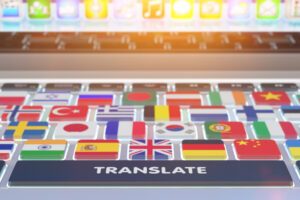Note: This blog post was originally written in Japanese for our Japanese website. We used our machine translation platform Translation Designer to translate it and post-edit the content in English. The original Japanese post can be found here.
"Can I request a translation company to check my translated document?"
"What should I do if my document was revised after already requesting translation services?"
For those who have questions regarding translation requests, this post is a must-read. Whether you have been doing business with translation companies or don't have any experience using professional translation services, we'd like everyone to learn more about what kind of services translation companies can provide.
We will go over two commonly asked questions in this post!
Q1. Can I request only a translation review?
A1. Yes, if you already have a translated document, we can provide review only services. There are various types of review services depending on what you want to check.
Bilingual review
A bilingual review is a process to check whether the document is accurately translated by comparing the original text and the translated text. This review is good if you are worried about the accuracy of your translation. Some customers request this review when they have their employees translate documents and want to use them officially such as for collateral materials.
However, depending on the quality of your translation, we might not be able to provide the service. If there is a huge number of corrections to be made, the workload will exceed what we expect in a review process, making it necessary to redo the translation instead.
Native check
In a "native check," linguists proofread documents in their native language to check whether the translated text is natural and see if the grammar is correct. Since this review is focused on just the translated text, it is hard to point out misinterpretations and missing translations. Linguists only check the translated document from the viewpoint of whether the expressions feel natural and whether there are any grammatical errors. For example, even if "strawberry" was translated into "orange" or some parts were not translated at all, these errors will be left unnoticed if the sentences are grammatically correct and seem natural.

Layout check
In a layout check, we review the final output or appearance from the viewpoint of whether the layout looks natural in the native language and whether there are any language-specific errors. Even if the translation itself is fine, there might be inappropriate line breaks when someone who doesn't understand the translated language performs the layout work. Especially in the case of Thai, the meaning will change if line breaks are inserted incorrectly. Therefore, a layout check is essential when a non-native speaker performs layout work in Thai.
As we have covered here, there are different types of review work in translation projects. It's important to know what kind of check takes place in each review and understand its strengths and weaknesses.
Q2. What should I do if there are some changes in the document after starting translation?
A2. Let us know when you find out. We'll resume translation with your updated document. If the situation allows us, we can extract the updated parts and just additionally translate those.
Ideally, we all want documents to be finalized before requesting translation work, and then to move onto using the translated text on websites, catalogs, and so on. However, that is not always the case. As anyone who works on design or ads knows, it is common to have a last-minute change. For printed material, you have to decide on when to finalize your data in consideration of the printing process, and the turnaround time for translations must be decided accordingly. Of course, even if you follow the planned schedule, often times your client will have some changes after starting the translation work. So, it's pretty common to have to request translation again with an updated document. How do translation companies generally handle such cases?

Basically, we'll just replace the document to be translated if it has been updated. However, if the project has already been kicked off and some translations are done, you will have to cover the costs for the completed work. This means that if you provide an updated document after all of the translation work has been completed, it's possible that you will have to pay double the amount. Suppose you only had a small change such as adding a couple of sentences. In this case, it's better to provide only the added sentences instead of the whole updated document since it's cheaper and takes less time.
In other cases, you might have multiple changes in different parts of the document after it has been completely translated. If your document is a Word or Excel file, it may be possible to work only on the changed parts by comparing the differences between the old version and new version. However, the cost and turnaround time will vary depending on your preferred delivery format. While some request to only work on the changed part that needs translation, others request to present the entire document by combining the additionally translated text with the existing translations from the initial translation work. We recommend that you check the details with the translation company you're working with before proceeding with a project.
On a side note, translation companies usually charge per sentence for the translation work of changed parts. Let's take a look at an example. "The teacher goes to the library every Sunday, then goes shopping at the mall and then goes home." Even if you only change Sunday to Saturday, we have to look at the entire sentence and may have to adjust other parts of the translated sentence if necessary. That means you will be charged for the whole sentence and not just the word. So, even if you only have 30 characters that were changed, it's possible that the translation cost is equivalent to 500 characters of changed text.
In any case, translation companies including us will suggest the best way to take care of the additional translation when you provide a revised document. We will look for a way that requires less time and additional costs as possible.
Kawamura's translation services
Depending on which of the factors such as quality, turnaround time, or cost should be prioritized, it becomes more important in the future to select between or combine human translation and machine translation with post-editing wisely.
At Kawamura International, our experienced staff will propose the optimal solution according to your needs and challenges that you face. If you have any questions or concerns about translation or localization projects or have questions in general, feel free to contact us.
_CMYK_OL.png)


